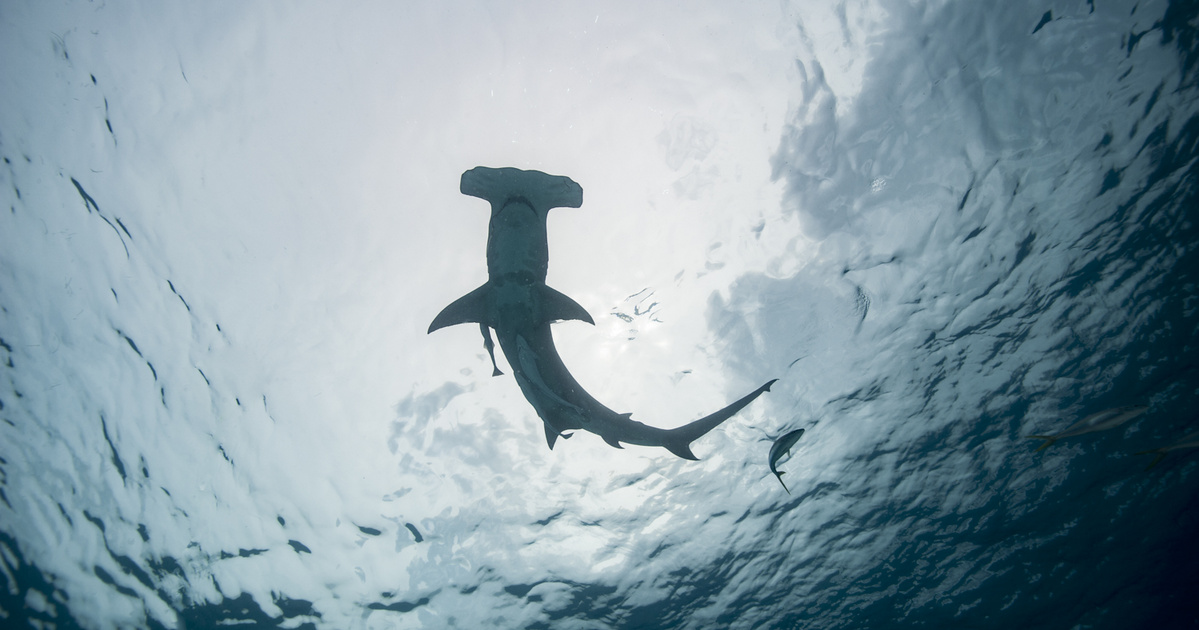Although hammerhead sharks feel really good in warmer currents, hunger is king. Predators living in shallow upper tropical waters dive to a depth of about a thousand meters at night to get food for themselves.
If the change in pressure is not enough to challenge the body, the temperature there is not friendly either. However, hammerheads, which prefer warm waters, are not shaken by anything close to freezing, as they are still able to maintain their body temperature above twenty degrees, the only question being how.
Special warriors
Mark Royer, a shark biologist at the University of Hawaii, has watched marine predators with endless fascination and curiosity throughout his life. In the ancient culture of Hawaii, sharks played a special sacred role.
Notable among them were the Hammer family, whom they believed to be protectors, the so-called “Omakwa”. Children born under the sign of this aquatic predator were seen as future conquerors of the seas and warriors.
Although sharks are often portrayed as dangerous predators in pop culture, even compared to their peers, hammerheads are relatively calm. According to the International List of Shark Attacks, in the past 500 years, there have only been 17 unprovoked attacks on humans, but none of these cases have been fatal.
the New York times Based on his report, Royer and his team noted the depths to which hammerheads penetrated during each hunt. It was then that the question arose of how to resist the severe cold, although the body temperature of sharks largely depends on the temperature of the water around them.
Unique mechanics
The scientists installed special sensors next to the predators’ dorsal fins, which were able to monitor the marine fishermen’s body functions — such as body temperature — as well as sense the depth at which they were searching for prey.
After a few weeks of observation, the sensors automatically separated from the animals and then signaled to the researchers where to find them in the water.
The results of the observations also surprised scientists.
When Hammerhead begins to dive, his body temperature drops momentarily, then he immediately returns to his core state. Although they dive to a depth of nearly a thousand meters, where the environment is around the freezing point, their body temperature never goes below the pleasant room temperature of twenty degrees.
In order to find out the answer to the riddle, they also examined the heat release of dead sharks, which were compared to their hunting companions.
While analyzing the data collected, Mark Royer and his team concluded that sharks do not lose body heat through gills. The significance of this is that fish have the largest heat-release surface in the respiratory system.
According to Royer’s hypothesis, when hammerheads begin to dive, they somehow close their nostrils so that cold water does not flow through them. At the same time, they cannot breathe, but they are able to protect themselves from the cold during the hunt, sometimes for several hours.
According to the researchers, this is a unique method in the world of marine organisms.
As a next step, the biologist and his team plan to attach body cameras to some individuals and monitor them during research to prove their hypothesis. At the same time, Royer also wants to study the metabolism of hammerheads to see how their bodies regenerate between two hunts.
In his opinion, this may be the key to understanding why hammerhead sharks have died out as one of the fastest fishing nets. Deep sea diving is a massive short term stress on the body they are quite accustomed to, but long swiping in the net requires a different kind of endurance that the breed probably doesn’t have.
(Cover photo: Hammerhead shark. Photo: Alexis Rosenfeld/Getty Images)












































